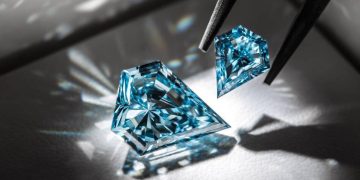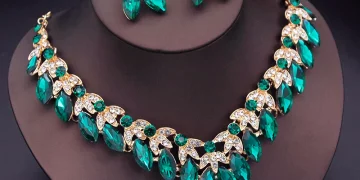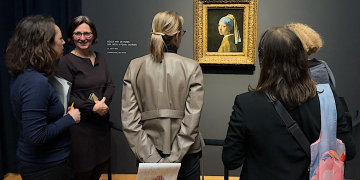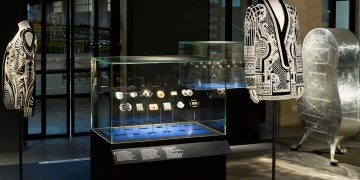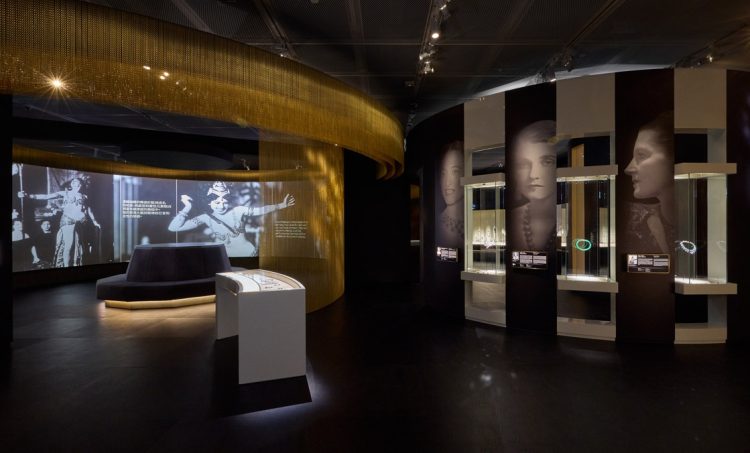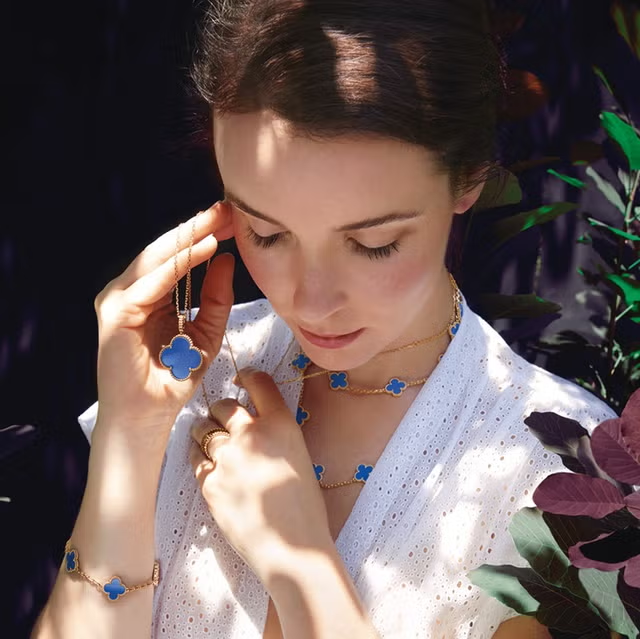Abstract
Jewelry exhibitions, particularly those held on a global scale, have long served as platforms to showcase the finest works of craftsmanship, design, and innovation. In recent years, these exhibitions have evolved into powerful spaces that blur the lines between luxury and art. Today, jewelry is no longer seen as just an accessory or a commodity but is being elevated to the realm of art in its own right. This article explores how global jewelry exhibitions, such as Baselworld, the Salon International de la Haute Horlogerie (SIHH), and the Couture Jewelry Show, are redefining the boundaries between luxury and art, highlighting the intersection of creativity, innovation, craftsmanship, and consumer perception. By examining the role of these exhibitions in shaping contemporary jewelry trends, fostering artistic collaborations, and pushing the limits of design, this article reveals how the global jewelry exhibition circuit is reimagining the jewelry industry as an art form.
1. Introduction
Jewelry, for centuries, has been associated with wealth, power, and adornment. Traditional perceptions of jewelry often saw it as an accessory for the elite, meant to symbolize status rather than artistic value. However, in recent decades, the boundaries between luxury and art have become increasingly blurred, with jewelry being viewed as a legitimate medium for creative expression, much like painting, sculpture, or fashion.
Global jewelry exhibitions have played a pivotal role in this transformation. These events provide a stage for both established jewelry houses and emerging designers to present their creations to a global audience, showcasing pieces that challenge conventional notions of luxury and art. The fusion of traditional craftsmanship with modern technology and avant-garde design has elevated the perception of jewelry, allowing it to transcend its utilitarian purpose and enter the world of high art.
This article explores the role of global jewelry exhibitions in reshaping the jewelry industry. Through in-depth analysis of major international jewelry shows and the artists and designers who participate in them, we will examine how these events are redefining the boundaries between luxury and art, and how they are fostering a new appreciation for jewelry as a contemporary art form.
2. The Evolution of Jewelry from Adornment to Art
2.1 Jewelry as a Symbol of Wealth and Power
Historically, jewelry has been associated with status and luxury, serving as a symbol of wealth, power, and social position. From ancient Egypt’s elaborate gold and gemstone pieces to the coronation crowns of monarchs, jewelry was often reserved for the elite, meant to showcase wealth and distinguish the wearer’s social status. For much of history, jewelry was considered a precious commodity, valued primarily for its materials and craftsmanship rather than artistic merit.
However, the 20th and 21st centuries witnessed a shift in how jewelry was perceived. The rise of modernism in art and design, along with the increasing influence of individual creativity, began to challenge the traditional, utilitarian view of jewelry. Designers began experimenting with unconventional materials, abstract forms, and bold colors, slowly elevating jewelry into a form of artistic expression rather than mere adornment.
2.2 The Role of Global Jewelry Exhibitions in Redefining Jewelry as Art
Global jewelry exhibitions have become key events in this evolution. These shows not only provide a platform for established luxury brands to showcase their creations but also offer emerging designers the opportunity to present their innovative concepts to a global audience. The exhibitions foster collaboration between artists, designers, and collectors, helping to shift the narrative around jewelry, from being a luxury item to a true form of art.
As the boundaries between art and luxury blur, these exhibitions have grown to include works that challenge traditional jewelry design principles, incorporating artistic techniques, conceptual ideas, and unconventional materials that push the limits of what jewelry can be.
3. Major Global Jewelry Exhibitions and Their Impact
3.1 Baselworld: The Pinnacle of Luxury and Innovation
Baselworld, held annually in Basel, Switzerland, is one of the most significant jewelry and watch exhibitions in the world. Known for its prestigious and highly curated selection of luxury brands, Baselworld has traditionally been associated with high-end timepieces and fine jewelry. In recent years, however, the show has increasingly showcased avant-garde designers and contemporary jewelers, further blurring the lines between luxury and art.
- Artistic Collaborations: Many designers at Baselworld now collaborate with artists from other disciplines, such as sculpture, painting, and architecture. This cross-pollination of ideas and techniques has led to the creation of jewelry pieces that are as much works of art as they are luxurious accessories. Jewelry at Baselworld is no longer simply about precious metals and gemstones, but also about the exploration of form, texture, and narrative.
- Redefining Craftsmanship: At Baselworld, traditional craftsmanship is often combined with innovative materials and cutting-edge technology. The fusion of age-old techniques, such as hand-engraving and stone-setting, with modern tools like 3D printing and laser cutting, results in pieces that are both high in technical skill and artistic expression. This trend highlights how contemporary jewelry has evolved beyond its traditional role into a form of creative storytelling.
3.2 The Salon International de la Haute Horlogerie (SIHH)
Originally focused on high-end timepieces, the SIHH, held annually in Geneva, Switzerland, has expanded its scope to include fine jewelry as well. This shift has made the exhibition a crucial space for showcasing the artistic side of luxury jewelry.
- Art in Jewelry Design: The emphasis at SIHH is not only on craftsmanship and heritage but also on the artistic qualities of the designs. For example, haute joaillerie pieces displayed at SIHH often feature intricate designs inspired by fine art, nature, and culture, offering a visual feast that pushes the boundaries of what jewelry can represent. Designers at SIHH use precious stones not just for their intrinsic value but for their artistic potential—transforming them into pieces that tell a story or evoke an emotion.
- Integrating Innovation with Art: SIHH exhibitors often highlight the intersection of artistic expression and technological innovation. For instance, brands like Piaget, Van Cleef & Arpels, and Cartier use cutting-edge technology in their design process, while still staying true to the aesthetic and artistic vision of their collections. This blending of art and science at SIHH has contributed to the ongoing redefining of luxury jewelry as a medium of art.
3.3 Couture Jewelry Show: Fostering Creativity and Innovation
The Couture Jewelry Show, held annually in Las Vegas, is an exclusive event that focuses on high-end, one-of-a-kind jewelry designs. This show has become a key platform for independent jewelry designers to showcase their creativity, providing a space for innovative and artistic designs that push the boundaries of traditional jewelry making.
- Customization and Artistic Vision: Designers at Couture often focus on creating highly personalized, bespoke pieces that reflect the unique tastes and personalities of their clients. These custom designs are frequently inspired by the artist’s personal vision and storytelling, offering a glimpse into the designer’s artistic process and perspective. The high level of customization and artistic freedom at Couture reflects a broader trend in the jewelry industry where design is becoming more individualized and emotionally resonant.
- Experimental Materials and Techniques: Many designers at the Couture Jewelry Show are known for experimenting with unusual materials—such as meteorite, titanium, and even recycled materials—incorporating them into innovative designs. These bold choices reflect the growing trend of using jewelry as a canvas for creative expression, where the material itself often carries meaning beyond its traditional preciousness.

4. The Intersection of Luxury, Technology, and Art
4.1 The Role of Technology in Elevating Jewelry as Art
Technology has played a significant role in redefining the boundaries between luxury and art in the jewelry industry. The integration of 3D printing, digital design tools, and augmented reality has opened up new possibilities for creativity, enabling designers to craft jewelry that was previously impossible to achieve using traditional methods.
- 3D Printing and Jewelry as Sculptural Art: 3D printing technology has allowed designers to create intricate, organic forms that challenge traditional notions of jewelry design. These pieces often resemble sculptures, with flowing curves, complex patterns, and unexpected shapes that evoke a sense of artistry and craftsmanship.
- Augmented Reality and the Digital Experience: Some jewelry brands now use augmented reality (AR) to allow customers to experience their jewelry in virtual settings. This digital innovation allows consumers to see how pieces will look on their bodies or in various environments, enhancing the jewelry’s artistic appeal and elevating the shopping experience to an interactive, visual art form.
4.2 Art as a Driver of Luxury Branding
The luxury jewelry industry is increasingly using art as a means of storytelling and branding. By aligning themselves with famous artists or incorporating artistic influences into their designs, brands are able to position themselves as not just purveyors of luxury but as curators of cultural and artistic value.
- Collaborations with Artists: Many luxury jewelry brands now collaborate with renowned artists from other disciplines, such as painting, sculpture, and fashion. These collaborations often result in limited-edition collections that carry both artistic and cultural value, further elevating the jewelry as a collectible art piece.
5. Conclusion
Global jewelry exhibitions are playing a critical role in redefining the boundaries between luxury and art, creating a new landscape where jewelry is no longer just a commodity but a medium for artistic expression. These exhibitions serve as platforms for designers to push the limits of creativity and craftsmanship, blending tradition with innovation. As the jewelry industry continues to evolve, we can expect to see even more artistic collaborations, technological advancements, and innovative designs that challenge and expand the concept of luxury.
By fostering a greater appreciation for jewelry as an art form, these global exhibitions are contributing to the ongoing transformation of the industry, helping to shape the future of jewelry design as a reflection of creativity, culture, and individual expression.



